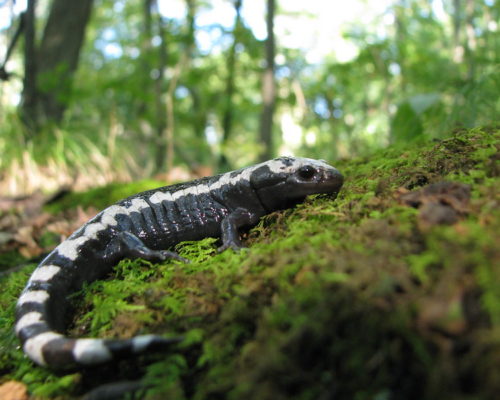Thanks to the handiwork of Ocean City, Md. residents, once-scarce waterbirds may be returning to Maryland’s coastal bays. A habitat restoration project launched in July seeks to draw birds back to the area, in the form of floating nesting spots.
Common tern, royal tern, and black skimmer populations have declined by over 90 percent since the 1980s due to loss of suitable nesting areas. The Maryland Department of Natural Resources attributes this habitat loss to shoreline erosion and sea level rise.
To prevent the total loss of these species, the DNR, Audubon Mid-Atlantic, and Maryland Coastal Bays Program have launched a collaborative project to increase available nesting areas in Maryland’s coastal bays. This summer, they deployed a floating wooden island which mimics the sand flats on which the birds would lay their eggs. The structure holds features including crushed clamshells as substrate, wooden chick shelters, and even decoy birds to attract nesters.
Creating new nesting sites provides a long-term solution to the population decline, as breeding pairs will remain where suitable habitat is available. Moreover, the birds hatched in this region will continue to breed here as well.
Ocean City woodworkers John Collins and Todd Peterson volunteered their time and skills to design and construct the structures. Features like the shelters and decoys were assembled by local volunteer groups and community members.
The waterbirds have an obvious ecological significance, keeping the ecosystem in balance by feeding on fish and other small aquatic animals. However, the community’s willingness to assist these birds also proves their cultural significance as well. An outpouring of support in the form of volunteers shows an excitement and interest in environmental efforts – a hopeful sign for the future of conservation.
The charismatic birds and their adorable chicks serve as ambassadors for their environment; when the community rallies to save them, they in turn begin working to protect other elements of the ecosystem.
Investing in an environmental conservation effort such as this has immediate benefits for the human population as well. In an area known for its natural attractions, preserving the landscape ensures future generations can enjoy both the scenery and activities nature may provide.
The DNR and its partner organizations will continue to monitor the waterbird populations in the Bay, specifically in the area in which the nest site was created. If this project is successful, it may lead to more widespread use of this method and further consideration for additional conservation projects in this area.
–Alaina Perdon




